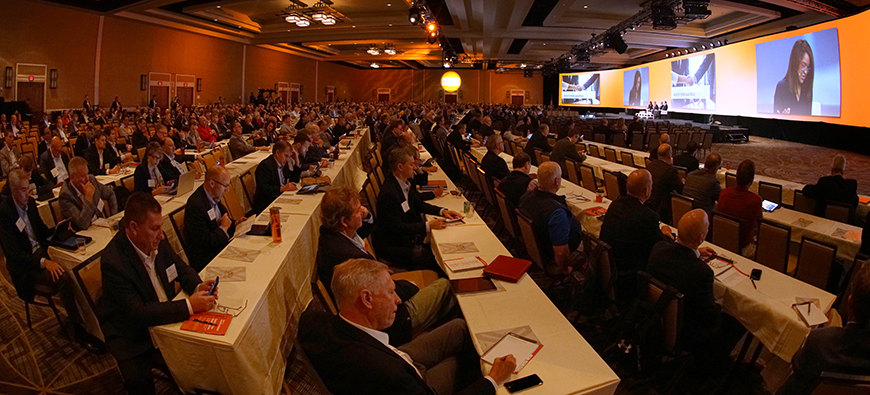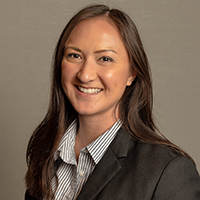
The Measure of a “Good” Deal
What makes a good bank deal? Depends on who you ask.
Mergers and acquisitions are a vital strategic undertaking for banks, and consolidation trends continue to shape the industry. To that end, I asked four presenters speaking at Bank Director’s 2020 Acquire or Be Acquired Conference the same question: “What is the most important metric of a bank deal? And what is the most important thing that can’t be measured?”
The response of the interviewees – a community bank CEO, two attorneys and an investment banker – were kept secret from each other. Their unique and varied responses belie their perspectives and experiences when it comes to bank M&A, and hopefully can shed some light on how others in the industry think about, and measure, a “good” deal.
Before Announcement
For Curtis Carpenter, principal and head of investment banking at Sheshunoff & Co. Investment Banking, the most important criteria to getting a good deal done comes down to location. “Geography is the most reliable characteristic to getting the deal done in today’s market. Where a bank is located is driving deals more than ever,” he says.
He points out that institutions in high-growth areas have a “high probability” of commanding a strong price, whereas a robust, profitable bank in a rural area with declining demographics may be challenged to get a deal done at a reasonable valuation.
For buyers, coming up with a reasonable purchase price and accurately assessing a seller’s asset quality are the most important elements in a good deal, says Bob Monroe, a partner at Stinson LLP.
“If you buy a bunch of junk, you’re going to get a bunch of junk, and you generally won’t have a successful deal,” he quips.
To account for the uncertain performance of acquired loans, Monroe says buyers will either not acquire certain assets or set up an escrow account that is equal to the present value of the assets in question so they can get worked out.
Frank Sorrentino III, chairman and CEO of ConnectOne Bancorp in Englewood Cliffs, New Jersey, says it was difficult to try to nail down an answer, even though “I knew what the question was going to be.”
Sorrentino has guided the $6.2 billion bank through three deals since 2014, and initially felt that a good deal can be measured by the market’s response. But he says the market might pan some deals that it doesn’t “fully digest or understand” because the deal may not generate immediate value at announcement.
For Sorrentino, good deals are ones that provide better internal opportunities for the pro forma bank and create additional value.
“I don’t care which metric you use, I don’t care what spreadsheet you use for your modeling – at the end of the day, are you creating more value? There are various components to values: some are financial, some are nonfinancial, but I think it really comes down to value,” he says. “Are you adding 1 and 1 and getting something north of 2?”
At, and After, Announcement
During Day 1 of the conference, Keefe, Bruyette & Woods President and CEO Tom Michaud highlighted that the premium that acquirers have offered sellers has declined since 2010. Part of that decline has come from a decline in potential buyers, but he added that investor concern around the pro forma company’s earnings per share and tangible book value growth has imposed discipline on deals.
One metric that Carpenter says can indicate a good deal is the performance of the buyer’s stock after the merger is announced, relative to the valuation the seller received.
“The most measurable tangible metric for grading the success of a bank sale would be price to tangible book value, and then how that stock performs in the 12 months after announcement,” he says. This is especially important for prospective sellers that would consider a merger that includes stock.
Peter Weinstock, a partner at Hunton Andrews Kurth, extends this to the second full year after a merger is consummated. Weinstock wrote in an email that the most important metric is the pro forma bank’s earnings per share accretion in that second year.
“While tangible book value earn-back is much ballyhooed – and has lately been a metric that has led to some good deals not being done – the true success of the deal is measured in what it does for the acquirer’s profitability once the majority of cost savings and synergies are achieved,” he wrote.
Sorrentino cautions that value creation doesn’t always carry a time stamp, and that bankers should resist short-term thinking or relying solely on metrics when assessing the value of a company or a deal.
“Sometimes the value is not necessarily created on financial terms. There could be value created [in a deal] because of talent, or because of the business lines you’re taking on,” Sorrentino says, adding that technological capabilities, efficiencies and cultural elements can also be acquired in a deal. “Everyone wants to look at the EPS accretion at announcement or tangible book value dilution. It may not be that simple.”
After Close
There is some agreement as to the most important unmeasurable aspect of a good deal. The consensus coalesces around integration and the cultural fit of the two banks. Buyers must manage the deal integration in a way that incentivizes and excites the seller’s employees, lest they look for other opportunities.
“Being able to fit your culture in with the seller’s culture is extremely important, because otherwise you’ll have a flat tire running down the road,” Monroe says. “It won’t be smooth.”
Adding to that, Weinstock wrote that the buyer’s “willing[ness] to spend the leadership time, devote the financial resources and risk overcommunicating” in order to integrate the banks’ operations, vision and culture is the most important immeasurable metric of a good deal.
For sellers, the hardest thing for banks to measure in a deal is how it will affect their employees, Carpenter says. Executives at selling banks often hope that a deal only furthers the opportunities and careers of its employees, as well as benefits the selling bank’s community. One way prospective buyers can help sellers with this concern is by putting the prospective seller in touch with former CEOs of previously acquired banks.
“More often than not in this environment, [deals] really come down to one buyer courting a seller, or you’ve reduced the number of bidders down. The seller is wondering ‘Is this a good deal? Can we trust this guy?’” Carpenter says. “The buyer can offer up, ‘Here’s two people that ran banks we bought, call them and asked them how it went.’”
Michaud says banks considering engaging in M&A should “start at the end,” identifying what they want a deal to achieve.
“It needs to be all of these things to work: well-priced, strategic merit and be logical, earn-back that fits within the barrier. It can’t be complex and have a lot of noise, it must be accretive or investors will want to know why you did it, and it needs to be well-structured too so everyone stays in their seat and is there to execute,” he says. “If you do all of these things, you can create a lot of shareholder value.”



